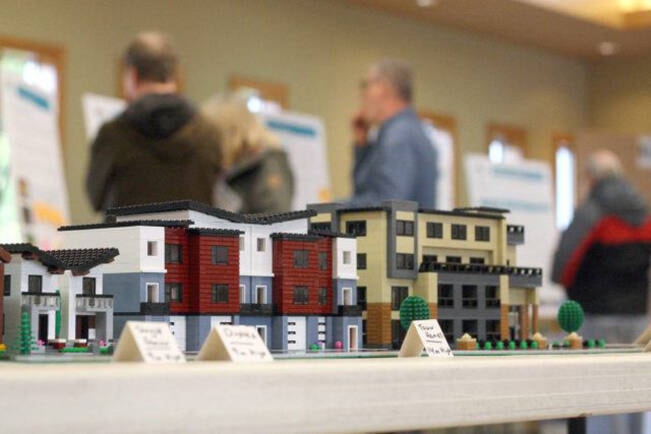BY HUDA SUWI
It is time for everyone to have a door.
Low-and-middle-income households are finding themselves stuck in the middle due to a shortage of variety in housing types that fit financial situations. Housing preferences are changing. Are ‘missing middle’ houses the response to the Nanaimo housing crisis?
Missing middle houses refers to all housing unit types that range between multi-storey units and single-family units such as house-plexes, small apartment buildings and townhouses situated on small lots.
It provides a solution for the current levels of housing stock, shifting demographics, and the growing demand for walkable urban living. It tends to be cheaper than single-family homes and provides a good chance for households to enter the real estate market or have a house.
More dense housing close to shopping, services, and jobs will demand less off-street parking due to the walkability in the neighbourhood. That’s all a big benefit as low-density areas produce annual carbon emissions per household at a rate of 5.5 to 8.4 tonnes per year; in high-density areas the average is 4.2 tonnes per year.
Changing zoning rules will allow more density and that could lower property prices. We want to provide more missing middle without the re-zoning process. The aim is to add more options by amending bylaws around land use and the official community plan to make it as flexible to replace a single-family house with a house-plex as it is to rebuild a single-family home on the same lot.
Many cities have recently embraced changes to their bylaws while others have proposed pilot studies to reintroduce these types of houses to their neighbourhoods.
Regardless of the path accepted, there is always room to learn and develop. The shift to missing middle housing is rising in Metro Vancouver. Row houses and townhouses control new developments in Langley and Surrey, while Vancouver is seeking public input on permitting more missing middle housing. Victoria council approved a program to permit house-plexes, corner townhouses, and some infill housing on lots that currently allow single-family homes with specific characters and guidelines.
READ ALSO: Victoria adopts its missing middle housing initiative in bid to retain residents
There is a conflict between people who support the missing middle and those who fear the change. Residents who want a lot more houses are labelled YIMBYs (yes in my backyard), and those who desire to keep the solidity of the neighbourhoods are called NIMBYs (not in my backyard) – many activists and developers think it’s time to impose building in backyards.
Some house owners are concerned that adding more density to their neighbourhoods will drop the value of their houses. There are fears that it would kill green space while doing nothing to improve affordability. And will provide developers with a blank cheque to bulldoze the character of the neighbourhood.
It’s difficult to find people who don’t say yes to the idea of the missing middle, at least theoretically. The question, however, is how do we implement the missing middle as a solution without scrapping the character of neighbourhoods? It is fundamental to make harmony between the proposals and the process challenges which can prevent meeting the real needs.
We want to bring balance to the housing crisis to make sure everyone has a roof over their head.
Huda Suwi is a master of community planning student at Vancouver Island University.
editor@nanaimobulletin.com
Like us on Facebook and follow us on Twitter
